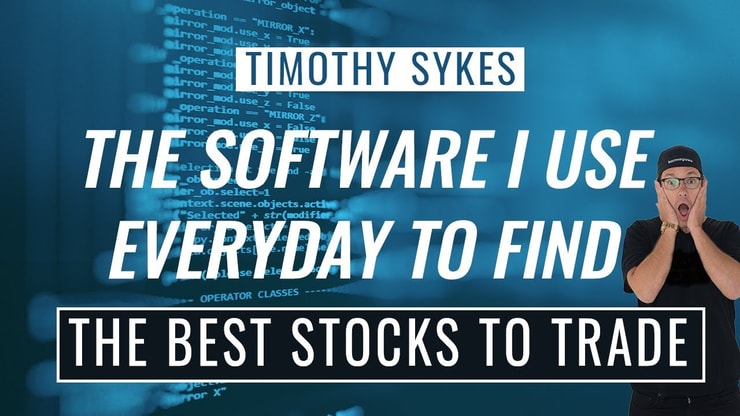Anyone interested in investing in dividend stocks should understand forward dividend yield. This metric helps investors gauge potential future returns from dividend payments, making it a top component of any dividend stock analysis. Traders aiming to generate steady income from their investments should use this tool.
You should read the article because it offers practical tips on maximizing your returns by understanding forward dividend yield and its influencing factors.
I’ll answer the following questions:
- What is forward dividend yield?
- Why is forward dividend yield important for dividend stock traders?
- How is the forward annual dividend rate determined?
- How do you calculate dividend yields?
- What factors influence forward dividend yield?
- How can diversification help manage dividend stock risk?
- What are Dividend Aristocrats, and why should you consider them?
- What are the differences between forward, indicated, and trailing dividend yields?
Let’s get to the content!
Table of Contents
- 1 What Is Forward Dividend Yield?
- 2 How to Calculate Dividend Yields
- 3 Factors Influencing Forward Dividend Yield
- 4 Strategies to Maximize Forward Dividend Yield
- 5 Difference Between Forward, Indicated, and Trailing Dividend Yields
- 6 Limitations Of Using Forward Dividend Yield
- 7 Key Takeaways
- 8 Frequently Asked Questions
What Is Forward Dividend Yield?
Forward dividend yield represents a stock’s projected annual dividend payments, expressed as a percentage of its current share price. This yield offers investors a glimpse into the future earnings they can expect from dividends, assuming the company maintains or increases its payout. For dividend stock traders, this metric is one to remember for several reasons:
- Income Prediction: It helps estimate future dividend income.
- Investment Comparison: Facilitates comparison between different dividend stocks.
- Portfolio Planning: Assists in planning and optimizing dividend income portfolios.
It’s important to stay informed about the market and continuously assess your portfolio to ensure it aligns with your financial goals. For practical tips on building a diversified portfolio with strong dividend stocks, consider exploring various sources and strategies outlined in related articles. For more insights on building a diversified portfolio, visit this guide on weekly dividend stocks.
What Is the Forward Annual Dividend Rate?
The forward annual dividend rate is calculated by multiplying the most recent quarterly dividend payment by four. This projection assumes that the company will continue to pay the same amount over the next four quarters. Companies often announce their forward dividends through:
- Quarterly Reports: Regular updates from the board of directors.
- Press Releases: Public announcements detailing future dividend plans.
- Investor Relations Websites: Platforms providing comprehensive financial information and projections.
How to Calculate Dividend Yields
Calculating dividend yields is the formula for investors to understand the return they can expect from their equity investments. This involves a simple yet vital formula: dividing the annual dividend payment by the current stock price, then multiplying by 100 to get the yield percentage.
The value of this calculation lies in its ability to give stockholders a clear picture of income relative to their investment. When teaching trading courses, I often emphasize the importance of accurately applying these formulas using tools like Excel for precise finance calculations.
To make these calculations even more accessible and efficient, having the right tools is crucial. This is where a robust trading platform can make a significant difference.
When it comes to trading platforms, StocksToTrade is first on my list. It’s a powerful day and swing trading platform that integrates with most major brokers. I helped to design it, which means it has all the trading indicators, news sources, and stock screening capabilities that traders like me look for in a platform.
Grab your 14-day StocksToTrade trial today — it’s only $7!
Forward Dividend Yield Formula
To calculate the forward dividend yield, use the formula:
Annualized dividend/stock price = forward dividend yield
Here’s a step-by-step guide:
- Determine the Forward Annual Dividend Payment: Sum the expected dividend payments for the following year.
- Find the Current Share Price: Check the latest stock price.
- Apply the Formula: Divide the annual dividend payment by the share price, then multiply by 100 to get the percentage.
Factors Influencing Forward Dividend Yield
Several factors influence forward dividend yield, making it a priority for investors to stay informed on various topics that affect their investments. Major elements include company performance, industry trends, and broader economic conditions. Understanding these factors can help investors allocate their capital more effectively and predict potential changes in dividend payouts.
For example, economic downturns can lead to reduced dividends as companies prioritize maintaining financial stability. In my trading courses, I stress the importance of examining these numbers and staying current with financial news to make informed investment decisions. People need to understand how different factors contrast to navigate the complexities of dividend investing.
More Breaking News
- Decoding the Unexpected Surge: Is Asset Entities Inc. the Next Big Thing?
- Market Whisper: Is Canaan Inc. a Hidden Gem Amidst Recent Gains?
- FTAI Aviation Faces Turbulence: Are These Allegations Too Big to Ignore?
Stock Prices
There is an inverse relationship between stock prices and dividend yields. As stock prices rise, dividend yields tend to decrease, and vice versa. For example:
- ABC Corp: If the stock price increases from $50 to $60, the yield decreases if the dividend remains unchanged.
- XYZ Inc: A drop in stock price from $40 to $30 increases the yield if the dividend stays constant.
Industry Trends
Industry trends significantly influence dividend yields. For an in-depth look at how industry trends affect dividend stocks, read this article on safe dividend stocks (in a constantly changing market, no stock should be considered “safe”). Trends within specific sectors can lead to varying dividend ratios, impacting how investors perceive value and potential returns.
For instance, industries like utilities and consumer goods are known for stable, high dividend payouts, whereas tech companies might reinvest more of their profits. Investors should conduct thorough research, examining the financial content and industry articles provided by analysts. In my teaching experience, I highlight how understanding these trends can help stockholders align their investments with industry-specific growth trajectories.
- Utilities: Often provide consistent dividends due to stable demand.
- Consumer Goods: Typically offer reliable dividends driven by steady earnings.
Company Growth
Company growth plays a significant role in determining dividend policies and future payouts. Fast-growing companies often reinvest their earnings into expansion rather than paying high dividends, while more mature companies might focus on returning capital to shareholders.
Understanding these dynamics helps investors predict how a portion of their investments might perform. When teaching, I emphasize analyzing financial statements and growth projections to assess a company’s potential for dividend increases. This approach involves looking at the numbers and accuracy of growth estimates to make well-informed investment choices.
- Tech Startups: Usually reinvest earnings into growth rather than paying dividends.
- Established Firms: Like large-cap consumer goods companies, tend to pay regular, stable dividends.
Company Fundamentals
Company fundamentals are critical in assessing the sustainability of dividend payments. Major elements such as earnings, cash flow, debt levels, and overall financial health determine a company’s ability to maintain or increase dividends. Analyzing these fundamentals involves looking at accurate financial data and understanding the numbers behind a company’s operations.
For instance, companies with strong earnings and low debt are typically better positioned to provide consistent dividend payouts. Understanding these financial indicators and contrasting them across different cases can guide investors toward more stable and profitable dividend investments, ensuring that their money is well-allocated in the stock market.
Strategies to Maximize Forward Dividend Yield
Maximizing forward dividend yield involves employing strategic approaches tailored to individual investment goals. One effective strategy is diversifying across various sectors and high-dividend ETFs to spread risk and ensure a steady income. Another approach focuses on Dividend Aristocrats, which have a proven track record of increasing dividends over time.
Analyzing financial ratios and company assets can provide deeper insights into potential returns. When mentoring traders, I stress the importance of continuous learning and staying updated with the latest finance articles and research to refine their strategies and maximize dividend yield effectively.
The right software can significantly enhance your trading strategy. In the video below, I share the software I use daily to identify the best stocks to trade, providing insights into its features and how it helps streamline the stock selection process.
Diversification
Diversification helps manage risk in a dividend stock portfolio. By spreading investments across various sectors and companies, investors can reduce the impact of poor performance from any single stock.
- Mix High and Low Yield Stocks: Combine high-yield stocks with stable, lower-yield stocks.
- Invest in Different Sectors: Include sectors like utilities, consumer goods, and financials.
Dividend Aristocrats
Dividend Aristocrats are companies with a history of increasing dividends for at least 25 consecutive years. These companies are often seen as reliable sources of dividend income.
- Stability: They provide consistent and growing dividend payments.
- Quality: Often have solid fundamentals and stable earnings.
Reinvestment Plans
Dividend Reinvestment Plans (DRIPs) allow investors to reinvest their dividend payments into additional shares, often without paying brokerage fees.
- Sign Up for DRIPs: Check if your brokerage or company offers DRIP options.
- Select Companies: Choose companies with DRIPs and strong growth potential.
- Monitor Performance: Regularly review the performance of your reinvested dividends.
Difference Between Forward, Indicated, and Trailing Dividend Yields
The main difference between forward-indicated and trailing dividend yields lies in their calculation periods and projections:
- Forward Yield: Based on projected annual dividends.
- Indicated Yield: Reflects the latest declared dividend.
- Trailing Yield: Calculated using dividends paid over the past year. For instance:
- Forward Yield: ABC Corp expects to pay $4 next year on a $100 stock price (4% yield).
- Indicated Yield: The latest quarterly dividend declared is annualized ($1 x 4 / $100 = 4%).
- Trailing Yield: Dividends paid last year total $3.50 on a $100 stock price (3.5%).
Limitations Of Using Forward Dividend Yield
While forward dividend yield is a valuable tool, it has limitations. It relies on projections that may not materialize, potentially misleading investors. Additionally, it doesn’t account for changes in stock price or unexpected financial challenges a company might face. Therefore, relying solely on this metric can be risky.
I don’t trade dividend stocks because dividends detract from the stock’s price, but it’s always good to know about ALL the parts of the market. Any investment strategy can work as long as you know the pitfalls before you invest, but check out this video for more on dividends and some surprising facts.
Key Takeaways
- Projection Tool: Forward dividend yield estimates future dividend payments as a percentage of the current share price.
- Influence Factors: Stock prices, industry trends, company growth, and fundamentals impact the yield.
- Maximization Strategies: Diversification, investing in Dividend Aristocrats, and using DRIPs can enhance returns.
- Understanding Types: Knowing the differences between forward, indicated, and trailing yields is crucial.
- Risk Awareness: Be mindful of the limitations and use forward dividend yield alongside other analysis tools.
Trading isn’t rocket science. It’s a skill you build and work on like any other through education and practice. Trading has changed my life, and I think this way of life should be open to more people…
I’ve built my Trading Challenge to pass on the things I had to learn for myself. It’s the kind of community that I wish I had when I was starting out.
We don’t accept everyone. If you’re up for the challenge — I want to hear from you.
Apply to the Trading Challenge here.
Trading is a battlefield. The more knowledge you have, the better prepared you’ll be.
How do you pick your dividend stocks? Write “I’ll keep it simple Tim!” in the comments if you picked up on my trading philosophy!
Frequently Asked Questions
What Is a Good Dividend Yield?
A “good” dividend yield varies by industry and market conditions. Generally, a yield between 2% to 4% is considered solid. Remember to compare yields within the same sector for a fair assessment.
Can Dividend Yield Be Negative?
The dividend yield cannot be negative. If it appears so, it indicates a calculation error or a misunderstanding. A negative yield would imply paying more in dividends than the stock price, which isn’t possible.
Is the Dividend Yield Calculated Annually or Quarterly?
Dividend yields are typically calculated annually, reflecting the total expected dividend payments over a year divided by the current share price. However, some companies report yields based on quarterly payments, which are then annualized for clarity.












Leave a reply